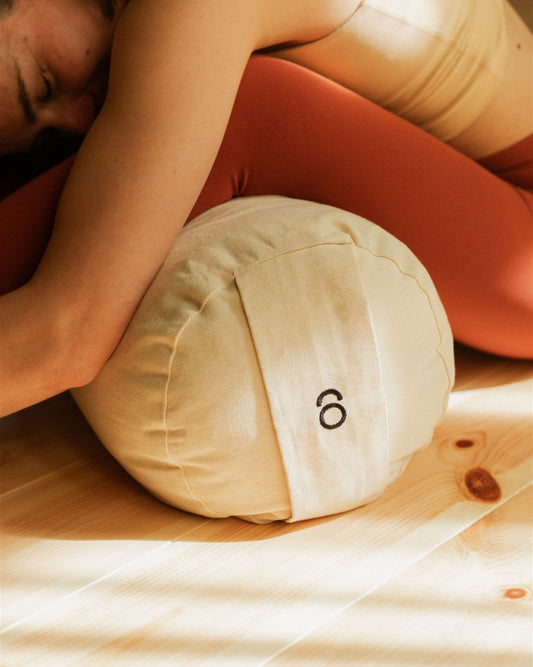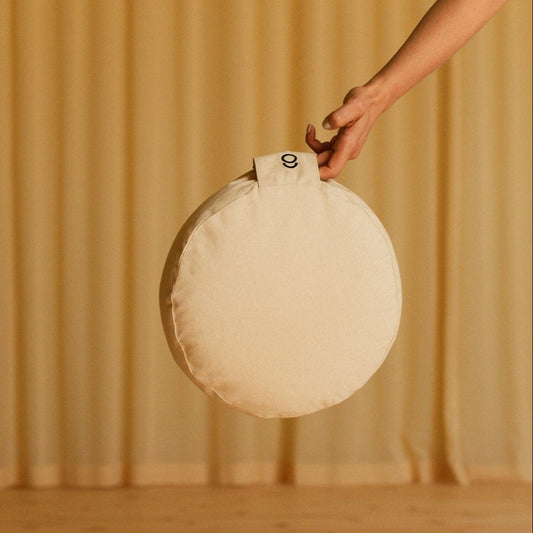Table of Contents
- What is Meditation
- Why should you meditate? Benefits of Meditation
- How Meditation changes the Brain
- Quick Guide to Starting Meditation Today
- How do I know that I meditate correctly?
- What Types of Meditation are There?
In today's fast-paced world, meditation has emerged as a popular practice for finding solace amidst the chaos. For most people the hardest part is to find out how to start meditation practice. It offers a sanctuary from the pressures of daily life, allowing us to tap into a deep sense of inner peace and well-being. In this article, we will explore the profound benefits of meditation, supported by scientific evidence, and delve into two specific meditation techniques: how to practice mindfulness meditation and how to meditate in bed. Whether you're a busy professional, a student overwhelmed by responsibilities, or simply someone seeking a calmer mind, this guide will provide practical insights on how to meditate properly, even without any prior experience.
What is Meditation, exactly?
Meditation is a secular practice centered around cultivating focused awareness of the present moment. The goal of meditation is not directed at solving a particular problem or concept but rather at developing a state of centeredness and mindfulness. It involves letting go of unnecessary thoughts and analysis, allowing the mind to be fully present and engaged with the current experience.
Read about the origins of meditation and its the cultural heritage.Meditation is a practice that involves training the mind to achieve a state of calm and focused awareness. It is a technique used to cultivate mindfulness and promote mental well-being (Gerritsen, 2018). In meditation, individuals engage in various exercises such as focusing attention on a particular object or observing thoughts and sensations without judgment. It is a secular practice that is not associated with any specific religion or a state of intoxication through drugs. It does not put you in some sort of hypnotic state. Instead, it aims to bring clarity, inner peace, and improved self-awareness by being fully aware during meditation. Through regular practice, meditation can help reduce stress, enhance concentration, and foster a sense of overall well-being.
Why should you meditate? Benefits of Meditation:
Meditation has gained popularity due to its remarkable potential to enhance various aspects of our lives. Its benefits extend beyond relaxation, offering a multitude of positive effects. Regular meditation practice can reduce stress (Schultchen, 2019) and anxiety (Goyal, 2014), boost concentration and focus (Zanesco et. al, 2018), enhance creativity, promote emotional well-being, improve sleep quality, increase self-awareness (Fischer et. al, 2017), and contribute to overall life satisfaction. These profound advantages have captivated individuals from all backgrounds, prompting them to embrace meditation as a pathway to inner peace.
Several popular figures from various fields have embraced the practice of meditation. Here are a few well-known individuals who have publicly expressed their involvement in meditation:
Oprah Winfrey: The media mogul and philanthropist has been an advocate of meditation for many years. She has shared how meditation has helped her find balance and inner peace.
LeBron James: The NBA superstar incorporates meditation into his training routine to improve focus, mental clarity, and performance on the basketball court.
Hugh Jackman: The actor known for his role as Wolverine in the X-Men series has credited meditation for helping him stay grounded and centered in the midst of a demanding Hollywood career.
There is an abundance of research in the field on the effects meditation has on your body on a physiological and psychological level. Let’s have a look at the scientifically proven effects of meditation on your mind and body.

Scientific Effects of Meditation on the Body: How Meditation changes the Brain
Scientific research has revealed the profound impact of meditation on our physical and mental well-being. When we meditate, our brain undergoes remarkable changes. Regular meditation practice has been shown to increase the thickness of the prefrontal cortex, the area associated with attention and self-awareness. It also activates the default mode network, responsible for self-reflection and introspection. Additionally, meditation reduces the size of the amygdala, the brain region associated with fear and stress responses, leading to reduced anxiety and a sense of calm. Furthermore, meditation can improve emotional awareness, improve focus and concentration and cultivate compassion.
If you are interested in learning more about the exact effects down to the detail of how your hormone levels increase or decrease and how your physical brain can change through meditation, check out my book on meditation “Calm Your Mind. The Art & Science of Meditation”. Taking a secular and scientific look at meditation as well as diving into the cultural and historical origins, I created a wonderful summary of both the psychology and the science behind meditation which makes it a unique piece of education of the books on how to meditate out there.
Quick Guide to Starting Meditation Today: Meditation 101
So, how do you meditate? Everyone knows that they should meditate, but how do you meditate properly? The following guide will help you to get started with meditation for beginners.
-
Find a Quiet Space: Choose a peaceful environment where you can sit comfortably without distractions.
Especially when starting to do meditation as a beginner, instead of shifting from place to place with each meditation session, opt for a dedicated spot that you will use every time. This will foster a distinct atmosphere, expectations, and sensations associated with that specific meditation spot, enhancing the positive impact of your practice. Here you can set up your meditation cushion, put a blanket and set up incense like Palo Santo. A designated corner of your room which is solely used for meditation, a space which your brain will automatically connect to a sense of calm due to the repeated association with that feeling. In a sense, condition yourself like Pavlov’s dog, connect the well selected items located in your meditation space, the fragrance from incense like Palo Santo, the textures of your meditation pillow (also called zafu) or the floor to the ritual. You will notice after a while that the smell of the incense used stimulates a positive feeling, even when you are not meditating.
-
Set a Time: Allocate a specific time for your meditation practice, whether it's early morning, during a lunch break, or before bed. Having a designated time for meditation, to which you can consistently adhere, proves immensely helpful. Your mind and body will become accustomed to meditating at that chosen time, facilitating a deeper immersion into the meditative state. The significance of selecting a specific place and time for meditation cannot be overstated.
-
Posture: Sit in a relaxed yet upright position, with your back straight but not tense. You can sit on a cushion or chair if needed. During meditation, you may choose to sit in a straight-back chair or assume one of the traditional postures on the floor, with crossed legs. If you opt for the floor, place a meditation cushion on your meditation spot. Avoid lying down, as you may tend to doze off.
-
Focus on Breath: Close your eyes and bring your attention to your breath. Observe the inhalation and exhalation, allowing your mind to settle.
Breathing Exercise 1: Exhale gradually and completely. Inhale for a count of sixteen (or to the extent you can comfortably manage). Immediately initiate a slow exhalation for the exact duration as your inhalation. Breathe solely through your nostrils, avoiding mouth breathing. Attempt to engage your diaphragm and stomach muscles in the breathing process, rather than relying solely on your rib cage and shoulders. Repeat this "complete breath" exercise for three to seven cycles.
-
Embrace Thoughts and Let Them Go: When thoughts arise, acknowledge them without judgment and gently return your focus to the breath. This is one of the simplest ways to start meditating by focussing on your breathing. There are many more techniques from many cultural origins. This could be meditation with sounds or mantra meditation, many of them I explain in detail in my book.
- Start Small and Be Consistent: Begin with short sessions of 5-10 minutes and gradually increase the duration as you become more comfortable. Practice daily for optimal results. As a novice practitioner, it is recommended to engage in meditation twice a day, with each session lasting around twenty minutes. After a few weeks, you may gradually extend the duration to thirty minutes per session.

How do I know that I meditate correctly?
Likelihood is, you are doing it correctly as long as you are aware that you are meditating.
During meditation, distractions are common, pulling our attention away from the intended focus. These distractions can manifest as bodily sensations, worries about the future, daydreams of the past, fantasies, and other thoughts that disrupt our concentration.
Achieving a centered state of mind requires understanding these distractions and the motivations behind them. It may take years of practice to master meditation and regain focus amidst the complexities of the mind. But don't worry, you don't need to master anything at the start. You will notice the benefits of meditation even when you've only just started to learn how to meditate properly.
When starting the meditation journey, doubts may arise as wandering thoughts multiply. However, this experience reveals the habitual functioning of the mind that remains hidden during active engagement. Meditation helps us recognise and rectify these deficiencies, bringing subconscious thoughts and associations into conscious awareness. By evaluating and dismissing unhelpful thoughts, we gradually find solace and access our innate state of peace and joy.
Want to learn more? I wrote a beginner's guide to Meditation: Calm Your Mind. The Art & Science of Meditation.
What Types of Meditation are There? Which Meditation Type is best for me?
Take this quick quiz to find out which meditation type fits you best.
Mindfulness Meditation:
Mindfulness meditation involves paying attention to the present moment, cultivating an attitude of non-judgmental awareness. It is one of the most widely practiced forms of meditation and offers numerous benefits, including (Pathath, 2017):
- Stress Reduction: Mindfulness meditation helps reduce stress by bringing our attention to the present moment and letting go of worries about the past or future.
- Emotional Regulation: By observing our thoughts and emotions without judgment, we develop a greater sense of emotional awareness and can respond to situations with calmness and clarity.
- Improved Focus and Concentration: Regular mindfulness practice enhances our ability to sustain focus and concentrate on tasks, leading to increased productivity and efficiency.
- Enhanced Self-Awareness: Mindfulness meditation allows us to develop a deep understanding of ourselves, our patterns of thinking, and our reactions to various situations.
- Cultivation of Compassion: By cultivating non-judgmental awareness, mindfulness meditation promotes empathy, compassion, and kindness towards ourselves and others.
How to do Mindfulness Meditation?
Mindfulness meditation is excellent for reducing stress, increasing self-awareness, improving focus and attention, and fostering emotional regulation.
Top tip before you start: Put your phone in a different room and put it on silent. The mere psychological effect of knowing your phone is in the room makes it more likely for your mind to think about checking it for updates.
- Find a quiet and comfortable space where you won't be disturbed.
- Sit in a relaxed position with your back straight but not rigid.
- Close your eyes and bring your attention to your breath. Observe the natural rhythm of your breath as you inhale and exhale.
- Notice any thoughts, emotions, or sensations that arise, without judgment. Simply observe them and let them pass.
- Whenever you notice your mind wandering, gently guide your focus back to the breath.
Start with short sessions of 5-10 minutes and gradually increase the duration as you feel comfortable. You can even start with 1 minute.
How to meditate in bed?
For those who struggle with insomnia or find it challenging to set aside dedicated meditation time, meditating in bed can be a viable option. Here's how you can practice meditation in bed:
- Find a comfortable position lying down on your back, with your arms resting at your sides.
- Close your eyes and bring your awareness to your body, noticing the sensation of your body against the bed.
- Begin by focusing on your breath, following the inhales and exhales.
- As thoughts or sensations arise, simply observe them without attachment or judgment, allowing them to pass by like clouds in the sky.
- If you find yourself drifting into sleep, gently bring your attention back to the present moment and continue the meditation.
- Engage in this practice for a few minutes before bed to promote relaxation and prepare your mind for sleep.
While meditating in bed, it's important to strike a balance between meditation and sleep, as the primary goal is to cultivate a calm state of mind rather than dozing off completely. If you do fall asleep, that's more than fine, since that might have been the goal initially. But do consider finishing your meditation and letting your body fall asleep afterwards.

Loving-Kindness Meditation:
Loving-kindness meditation, also known as Metta meditation, focuses on developing feelings of love, compassion, and goodwill towards ourselves and others. It involves silently reciting specific phrases or well-wishes to foster a sense of connection and kindness. The benefits of loving-kindness meditation include:
- Increased Compassion: Regular practice cultivates a deep sense of compassion towards oneself and others, fostering positive relationships and reducing hostility.
- Emotional Resilience: Loving-kindness meditation helps develop emotional resilience by promoting forgiveness, acceptance, and understanding.
- Inner Happiness: By generating feelings of love and kindness, this practice leads to an increased sense of inner happiness and contentment.
- Stress Reduction: Engaging in loving-kindness meditation helps reduce stress and anxiety by shifting focus from negative thoughts to positive emotions.
How to practice loving-kindness meditation:
- Find a quiet and comfortable space to sit.
- Close your eyes and take a few deep breaths to relax your body and mind.
- Begin by directing loving-kindness towards yourself. Silently repeat phrases like "May I be happy. May I be healthy. May I live with ease."
- After a few minutes, shift your focus to loved ones, friends, acquaintances, and eventually to all living beings.
- Repeat the phrases, modifying them as necessary. For example, "May [person's name] be happy. May they be healthy. May they live with ease."
- As you recite the phrases, imagine sending love and well-wishes to each person.
If you feel like repeating a phrase silently in your head gives you too much of a religious feeling which you do not want, you can simply imagine yourself or others in a happy state or location as well.
Guided Meditation
Guided meditation involves following a recorded or live meditation session led by an instructor or using a meditation app. It is an excellent option for beginners as it provides step-by-step guidance throughout the practice. Guided meditations can cover various topics such as relaxation, stress reduction, self-compassion, or visualisation. Try for example Calm or Headspace apps for guided meditation. This form of meditation offers the following benefits:
- Easy Access: Guided meditations are readily available and accessible, making it convenient to start and maintain a regular practice.
- Structured Guidance: The instructions provided by the instructor or app help keep your focus and guide you through different meditation techniques.
- Enhanced Relaxation: The soothing voice and background music in guided meditations create a calming atmosphere, promoting relaxation and stress relief.
- Learning Opportunity: Guided meditations often include teachings or insights that deepen your understanding of meditation principles and techniques.
How to practice guided meditation:
- Find a quiet and comfortable space where you can listen to the recording without interruptions.
- Choose a guided meditation session or app that aligns with your interests and needs.
- Follow the instructions given by the instructor or app, allowing yourself to fully immerse in the experience.
- Let go of any expectations or judgments and be open to the guidance provided.
- Engage in guided meditations regularly to experience the cumulative benefits over time.
There are many more types and subtypes of meditative techniques, for example transcendental meditation, meditations where mantras are being used to focus on a certain topic or tool to focus. By exploring and practicing different types of meditation, such as mindfulness meditation, meditating in bed, loving-kindness meditation, and guided meditation, you can discover the approach that resonates most with you.
Remember, consistency is key, so commit to a regular meditation practice, even if it's just a few minutes a day. With time and patience, you will harness the transformative power of meditation and experience its profound benefits in your daily life.












